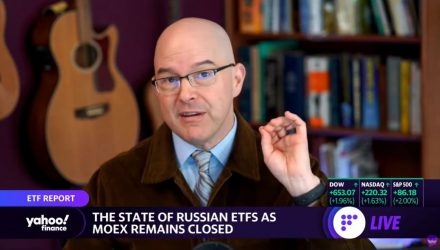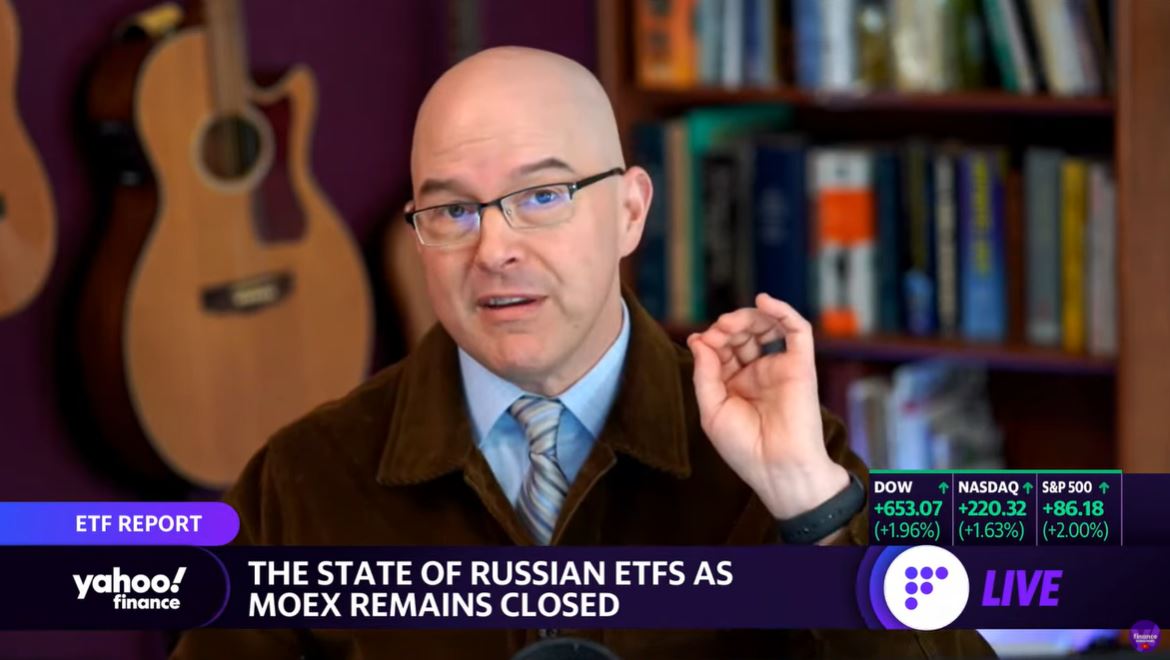
Checking in on this week’s “ETF Report” on Yahoo Finance, host Karina Mitchell is joined by ETF Trends’ Dave Nadig, who comments on the closure of the Russian stock market and what that means for Russian ETFs in general.
As Nadig explains, with the Russian market closed for the foreseeable future, the big ETFs to track in this space are in an interesting position. For example, the VanEck Vectors Russia ETF (RSX) was at $1.5 billion but is now at around $200 million. These funds tend to own global depository receipts (GDRs) either in London or the U.S. Those are still trading but at really delistable prices. These are not viable securities anymore.
“What happens in this environment is that the ETF becomes price discovery for the Russian market at large,” Nadig adds. When looking at funds like RSX, it’s essential to focus on what it’s trading at and not what it might be “worth” in a fair market. “It’s one of those cases where the ETFs really become the entire market.”
Were this Russia-Ukraine conflict to continue for a protracted amount of time, there are questions of what to expect from the sectors closest. Nadig states how this is uncharted territory in many ways, as there’s been nothing remotely close to this since the late 70s regarding conflicts in Iran, which were still at a time when global markets looked much different.
Nadig adds that the speed at which the global financial community has moved has been a bit shocking. Seeing the individual companies announcing individual projects, particularly in the energy sector, has added to the unpredictable nature of what is currently taking place.
“We are genuinely in untested territory,” @ETFTrends‘ @DaveNadig says about Russia-Ukraine, adding: “I think it’s a very dangerous time to start trying to play energy and oil… [and]to try to call a bottom in Russian stocks… far too many shoes to drop here.” pic.twitter.com/ygQCvNwTob
— Yahoo Finance (@YahooFinance) March 2, 2022
“I think we are in generally untested territory these days,” Nadig notes. “I’m telling people to be very cautious trying to call a top or a bottom in any piece of this. It’s a very dangerous time to try to play energy and oil. It’s a very difficult time to call a bottom in Russian stocks. There are far too many shoes that can drop here.”
This also puts index providers in a tricky position because things have moved so quickly. Most of what they have said so far is that the Russian indexes are essentially going to be frozen in place for the time being. That’s basically a minimum condition.
However, the bigger question is regarding the move toward a rebalancing period toward the end of this month, as the index providers start looking toward a market that might not re-open for investors at all. This creates questions about what to do with Russia with a broad emerging market index. Does one just kick it out right away, transition out, or what? It’s not entirely clear to Nadig as far as what the proper choice would be at this time.
Energy may be the most interesting sector to consider, as far as what it means for renewables. There’s have a simultaneous upward shock in oil prices, the prospect of NG being shut off, etc. That will drive the fossil fuel prices higher and thus make alternatives more attractive.
Nadig has been super bullish on the KraneShares Global Carbon Strategy ETF (KRBN) — carbon credits — before this crisis, but the reaction so far has been quite complex. Less oil means potentially more coal which means we could see strong demand, but it’s also not inconceivable that environmental regulations (and thus markets) could be perturbed should this go on for months.
For Nadig, this is precisely the wrong time to get cute and try and call a top or bottom on major energy commodities. It may, however, be a great time for general commodities exposure.
For more market trends, visit ETF Trends.

